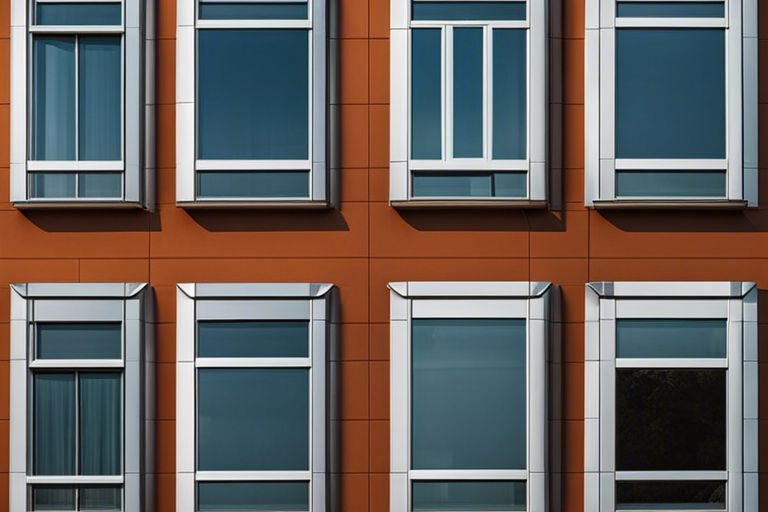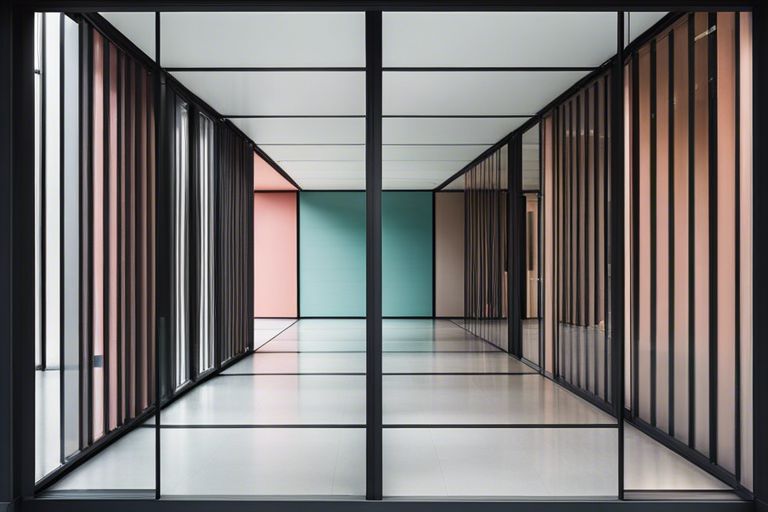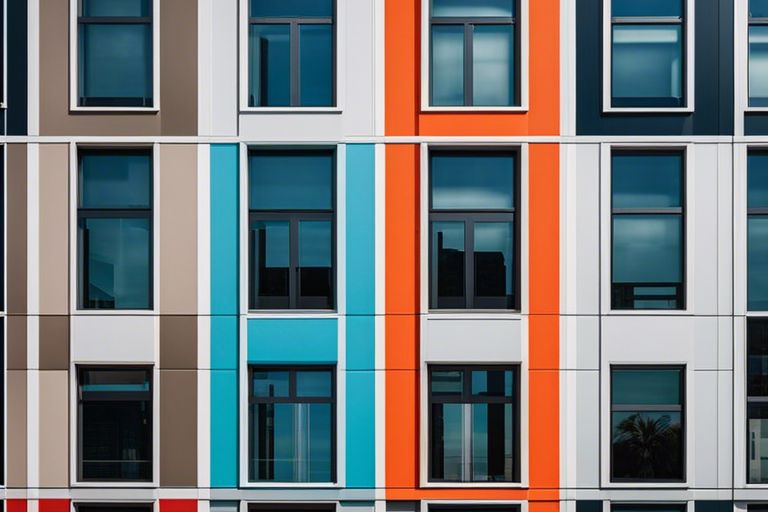Curtain walling is an essential feature in modern architectural design, offering both aesthetic appeal and functionality. One crucial aspect of curtain walling is the choice of windows, which can greatly impact the overall performance and appearance of the building. In this blog post, we will explore the types of windows commonly used in curtain walling systems, highlighting their importance, benefits, and potential challenges. Understanding the various types of windows available can help architects and designers make informed decisions when specifying curtain walling for a project.
Key Takeaways:
- Fixed Windows: These windows are stationary and do not open or close, providing a sleek and modern look to the structure.
- Top-Hung Windows: These windows open from the top, allowing for ventilation while maintaining a clean aesthetic.
- Sliding Windows: These windows slide horizontally, offering functionality and easy operation within the curtain wall system.

Understanding Curtain Walling
Definition and Function
A curtain wall is a non-structural covering of a building’s exterior, typically made of lightweight materials such as glass, aluminium, or steel. The primary function of a curtain wall is to provide a weather-tight seal while allowing natural light to enter the building.
One of the key functions of curtain walling is to enhance the aesthetic appearance of a building, giving it a modern and sleek look. Furthermore, curtain walls also offer thermal insulation, contributing to the overall energy efficiency of the building.
Components of Curtain Wall Systems
A typical curtain wall system consists of several components, including glass panels, aluminium mullions and transoms, spandrel panels, and sealants. The glass panels are held in place by the aluminium mullions and transoms, forming the exterior facade of the building.
The most critical component of a curtain wall system is the sealant, which prevents water and air infiltration into the building. In addition, spandrel panels are used to conceal the floor slabs and mechanical systems, maintaining a uniform appearance across the facade.
When designing a curtain wall system, it is vital to consider factors such as wind loads, thermal efficiency, and structural stability to ensure the longevity and performance of the building envelope. Careful selection and integration of these components are crucial in creating a reliable and effective curtain wall system.
Types of Windows in Curtain Walling
Windows in curtain walling come in various types to suit different architectural designs and structural requirements. Understanding the different types is essential for selecting the most suitable option for a building project.
- Stick Systems
- Unitized Systems
- Structural Glazing
| Stick Systems | Unitized Systems |
| Traditional method | Pre-assembled off-site |
| Individual components installed on-site | Quick installation on site |
| Suitable for small to medium-sized projects | Ideal for large-scale projects |
| Allows for easier customisation | Enhanced quality control |
| Manual labour intensive | Minimal disruption during installation |
Stick Systems
Stick systems involve the installation of individual components on-site, making them a traditional method of constructing windows in curtain walling. These systems are suitable for small to medium-sized projects and allow for greater customisation to meet specific design requirements. While stick systems offer flexibility, they are labour intensive and may require more time for installation.
Unitized Systems, on the other hand, are pre-assembled off-site and quickly installed as large units on the building facade. This method is ideal for large-scale projects as it ensures rapid installation with minimal on-site labour. Unitized systems offer enhanced quality control due to the manufacturing process being performed in a controlled environment, resulting in fewer errors during installation.
Unitized Systems
Unitized systems for windows in curtain walling have gained popularity due to their efficiency in installation and superior quality control. These systems are particularly advantageous for large projects where time and precision are critical factors. The pre-assembly of units off-site allows for quicker installation on-site, reducing overall construction time.
Structural Glazing
Structural glazing is a design approach that eliminates the need for window frames, creating a seamless, all-glass facade. This technique provides architects with a sleek, modern aesthetic while maintaining structural integrity. The use of structural silicone sealants bonds the glass panels to the structure, allowing for maximum transparency and natural light penetration.
Structural glazing offers a contemporary look to buildings and can enhance the overall appearance of a structure. The absence of visible frames provides unobstructed views and a sense of openness. However, it is crucial to consider the structural requirements and safety aspects when opting for structural glazing, as it requires precise engineering and installation to ensure the building’s durability and occupants’ safety.
Factors Affecting Window Choice
When it comes to selecting windows for curtain walling, there are several important factors that must be considered to ensure the right choice is made. The type of window selected can have a significant impact on the overall performance and aesthetics of the building. Here are some key factors that influence window choice:
- Thermal Performance
- Acoustic Requirements
- Aesthetic Considerations
- Maintenance and Durability
Thermal Performance
When it comes to thermal performance, it is crucial to select windows that offer high levels of insulation to reduce heat loss and improve energy efficiency. Choosing windows with low U-values can help in maintaining a comfortable indoor environment and reducing heating costs. Additionally, double or triple glazing with insulating argon gas between the panes is essential for enhancing the thermal efficiency of the windows.
Acoustic Requirements
For acoustic requirements, selecting windows with soundproofing properties is vital, especially in urban areas or buildings near busy roads. Windows with acoustic laminated glass can help in reducing external noise levels and providing a quieter indoor environment. Detailed analysis of the acoustic performance of the windows is necessary to ensure they meet the specific requirements of the building and provide a comfortable living or working space.
Acoustic requirements play a crucial role in creating a peaceful and productive indoor environment. Selecting windows with high-quality acoustic properties is essential to prevent noise disturbances and promote well-being.
Aesthetic Considerations
When considering aesthetic considerations for windows, it is essential to think about how the windows will contribute to the overall architectural design of the building. The style, colour, and material of the windows should complement the facade and reflect the desired aesthetic. Choosing windows that enhance the building’s visual appeal can create a striking and cohesive look while maintaining functionality.
Aesthetic considerations are key in achieving a visually pleasing and harmonious building design. By carefully selecting windows that align with the architectural style, the overall appearance of the building can be greatly enhanced.
Maintenance and Durability
When it comes to maintenance and durability of windows, selecting high-quality materials that are durable and low-maintenance is crucial for long-term performance. Windows that are resistant to weather conditions and corrosion are essential for ensuring longevity and reducing maintenance costs. Regular inspection and maintenance of windows are necessary to preserve their functionality and appearance over time.
Maintenance and durability are essential factors to consider in ensuring the long-term performance and aesthetics of windows. Choosing windows that are durable and easy to maintain can significantly extend their lifespan and contribute to the overall durability of the building.

Installation Considerations for Curtain Wall Windows
When it comes to installing windows in curtain walling systems, there are several key considerations that need to be taken into account. From safety and regulation compliance to integration with building systems, each aspect plays a crucial role in ensuring the efficiency and longevity of the installation.
Safety and Regulation Compliance
When installing curtain wall windows, it is essential to adhere to all safety regulations and standards to ensure the protection of both workers and occupants. The installation process should be carried out by trained professionals who are well-versed in health and safety practices to prevent any accidents or mishaps.
Furthermore, compliance with building regulations is crucial to avoid any legal issues and ensure that the installation meets all the necessary standards for structural integrity and safety. Regular inspections and maintenance checks should be conducted to ensure that the windows are secure and compliant with regulations.
Integration with Building Systems
Another important consideration when installing curtain wall windows is their integration with the building systems. This involves ensuring that the windows are compatible with the overall design and functionality of the building, including factors such as ventilation, thermal performance, and energy efficiency.
Proper integration with building systems not only enhances the aesthetic appeal of the building but also contributes to its overall performance and sustainability. By selecting windows that complement the building’s design and function seamlessly, it is possible to create a cohesive and efficient building envelope that meets the desired standards.
For effective integration with building systems, it is essential to consider factors such as waterproofing, insulation, and compatibility with other building components. By ensuring that the windows are properly integrated, it is possible to achieve a harmonious and high-performing building system that enhances the overall functionality and appeal of the structure.

Conclusion: Types of Windows in Curtain Walling
All things considered, there are several types of windows that can be incorporated into curtain walling systems, each offering unique benefits and functionalities. From fixed windows for a sleek aesthetic to operable windows for ventilation and natural light control, choosing the right type of window is essential in achieving the desired architectural design and performance goals. Whether opting for casement, tilt-turn, or sliding windows, it is crucial to consider factors such as energy efficiency, durability, and overall design unity with the building. By understanding the characteristics of different window types and their compatibility with curtain walling systems, architects and designers can create stunning facades that not only enhance the building’s aesthetics but also ensure functionality and comfort for its occupants.
FAQ
Q: What are the different types of windows in curtain walling?
A: There are three main types of windows used in curtain walling systems: fixed windows, operable windows, and tilt-turn windows.
Q: What is a fixed window in curtain walling?
A: A fixed window in curtain walling is a non-opening window that is designed to allow natural light into a building while maintaining a seamless facade. These windows are often used in areas where ventilation is not a priority.
Q: What are operable windows in curtain walling?
A: Operable windows in curtain walling are windows that can be opened to allow for ventilation. These windows can be hinged at the top, bottom, or side, or they can be sliding windows that move horizontally. Operable windows are often used in spaces where natural ventilation is desired.






